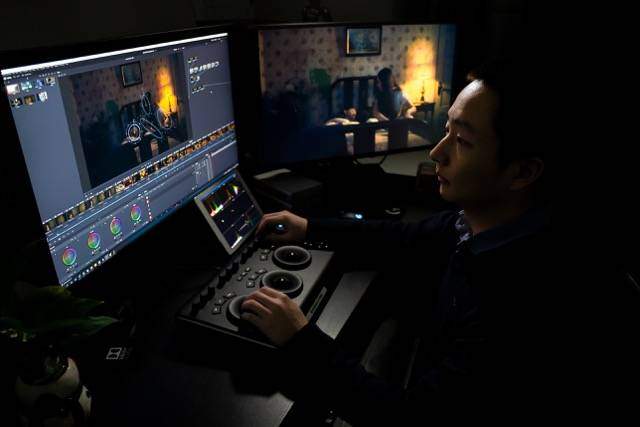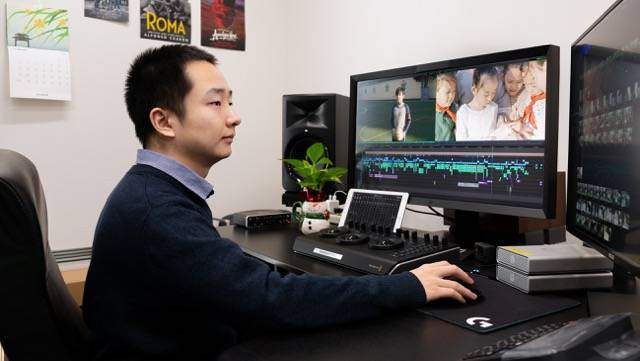
A teenage girl stands in a grassy field near the ocean, wind blowing her scarf and dress. As she removes the headdress, a trickle of blood escapes her nose. Amidst a flickering of light and sound, reality abruptly resurfaces and the girl awakens with a feeling of dread about the coming day. There’s a subtle sense that this story is not modern. This is no surprise to colorist Zhe Song who manifested a feeling of the past with his approach to this film in addition to magnifying the emotional impact of the actors’ performances. Paz is about a persistent ill of society, physical abuse and the mental and emotional toll it brings in tow.
The story of Paz is mainly told via the perspective of a girl named Linda whose family lives among the looming threat of their patriarch’s foul temperament. Existing within this bubble, Linda struggles to find value and respect for herself. The type of horror that propels this film is far more frightening than most because it depicts a real world monster tolerated far too often. Linda is suffocating in a world where the lack of emotional vibrancy is communicated through Zhe’s color design. The level of Linda’s despair and hope is driven by this vital and yet sometimes overlooked ingredient.

Nominations from the Los Angeles Film Awards, Play Film Festival, and American Society of Cinematographers (the largest cinematography union in the U.S.) highlights the excellence of the visual approach of Paz, of which the coloring is a major factor. Set in the first half of the nineteenth century, the coloring gives the veneer of this era and skews other aspects of the production design to appear aged. Zhe parses grades of yellow throughout the film to infuse a sense of warmth and closeness, also drawing contrast to the more ‘dangerous’ scenes when these hues are absent.
Once Linda finds a means of escaping her brooding father, the vibrant colors of the world resurface from a long dormant period. In establishing baselines of an emotional state of the characters in this film with his coloring, Mr. Song has covertly transferred this to the audience. From drab grays of depression to basking in the golden glow of those whom we trust, few of us notice how tied our view of life is to the colors around us.
The awareness of this and proficiency in applying it is the reason Director Andrew John Gutierrez (known for his work on the Golden Globe film Selena starring Jennifer Lopez and Oscar Nominated Actor Edward James Olmos) states, “It is difficult to find the right team to make a creative vision come together. I liken it to creating a wine, many try but it is a unique blend of influences that creates an award winning harvest. Zhe is one of those influences that would be very difficult to replace. Zhe has a unique perspective on color science, editing, and montage that makes him indispensable.”
While some filmmakers prefer to exist in a singular genre, Zhe has established his on diversity. From feature films to documentaries and online productions, the modern industry offers a wide range of expressive opportunities for someone as talented and forward minded as Zhe Song.
His current projects include The Bright Fire, a Chinese film about how the environment and people effect a child’s development and personality, and Face-On, a film about a female serial killer who decides post-breakup (from her serial killer boyfriend) to harvest the best female body parts from the most attractive celebrities she can find in one last attempt to create the “perfect” face. Enthusiastically, Zhe relates, “I’m particularly excited about The Bright Fire.
The film’s director Zeo Zou and I have worked together before and we are both excited to see how the film will be received at festivals. Working with so many different creative people in this industry is one of the most attractive things. Hollywood in particular is very open-minded and allows the opportunity to talk about different people and different cultures without worrying too much about the audience, society, and studios limitations. That’s a great sense of freedom for a filmmaker to have when creating.”
Writer: Arlen Gann